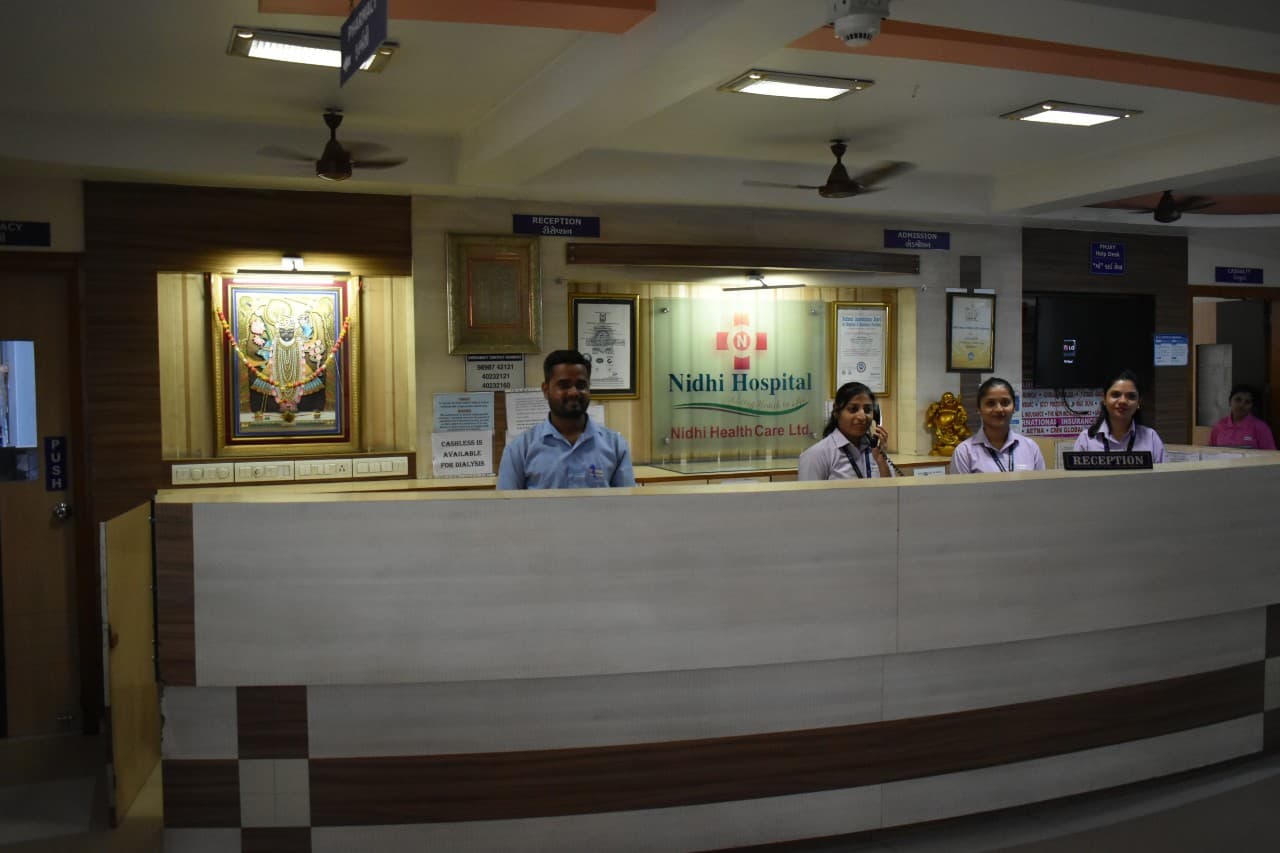Support Email :
Health check up inquiry :
+91-79-4023 2121
Support Email :
[email protected]Health check up inquiry :
+91-79-4023 2121





We' ve built a long standing relationship based on trust. Nidhi healthcare Ltd. has embarked on an ambitious initiative with the launch of Nidhi Hospital a 100 beds Multi Specialty in heart of Ahmedabad. As an associate hospital of Nidhi healthcare Ltd. Nidhi Hospital offers a holistic range of medical services to patients from across the globe.
Nidhi Hospital is rated by patients as the best hospital in Ahmedabad. Nidhi Hospital has the highest number of departments for any multi-specialty hospital right now. Nidhi Hospital is known as one of the Best Neurosurgery in India and is specialized in all types of treatments.
The hospital also has a state of the art facilities in several super specialties such as Laparoscopic Surgery, Neurosciences, Cancer Surgery, Orthopaedic, Spine Surgery and Best Gastrointestinal Surgeon in India.
The healthcare arena there was a felt need of developing new as well as upgrading the existing functioning and processes.
Our compassionate team of medical experts, committed to your health journey
Our affordable and tailored health checkup plans help you keep your health in check — before problems start.
What Our Patients Say



Take care of your health and that of your family today
Your Health is Our Priority
Book an Appointment
Our team will get in touch with you shortly to confirm your appointment and guide you through the next steps.
